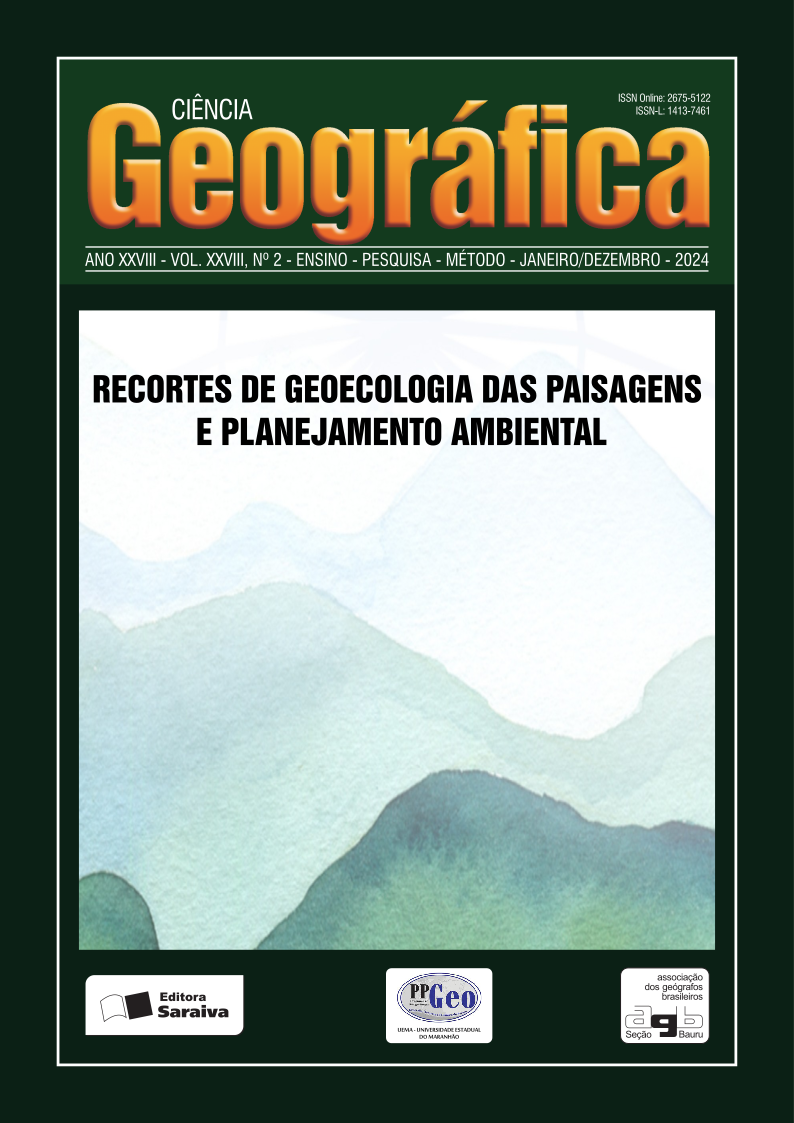A suscetibilidade à erosão como foco de análise: o caso da Bacia Hidrográfica do Ribeirão Paraíso, Caiapônia-GO
DOI:
https://doi.org/10.18817/26755122.28.2.2024.3852Palavras-chave:
Sistema de Informação Geográfica (SIG). Crepani. Planejamento territorial. Álgebra de mapas.Resumo
Este estudo objetivou mapear e comparar a suscetibilidade à erosão na bacia hidrográfica do Ribeirão Paraíso, aplicando a metodologia de Crepani et al. (2001) e confrontando-a com os dados da Embrapa (2020). Utilizando álgebra de mapas para integrar variáveis físico-naturais, identificou-se que a suscetibilidade varia de áreas estáveis a moderadamente suscetíveis, com destaque para a predominância de condições medianamente estáveis/suscetíveis. A comparação dos métodos revelou diferenças significativas nos resultados, enfatizando a utilidade de abordagens complementares para uma avaliação mais abrangente. O estudo realça a relevância de estratégias integradas de planejamento e gestão territorial, evidenciando a análise de suscetibilidade como ferramenta indispensável no mapeamento de riscos, essencial para informar a tomada de decisões na conservação e uso sustentável dos recursos naturais.


